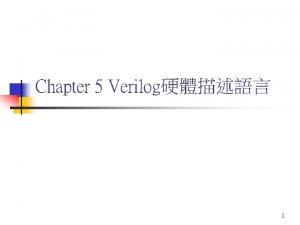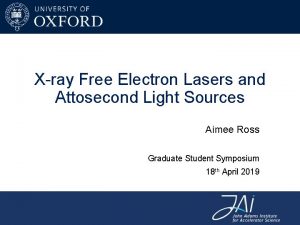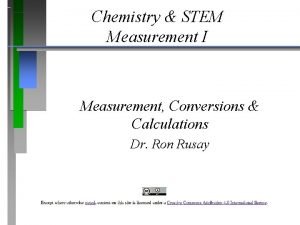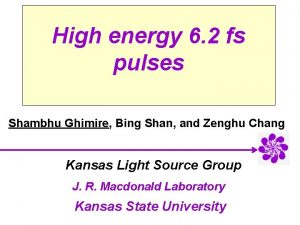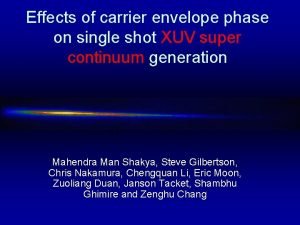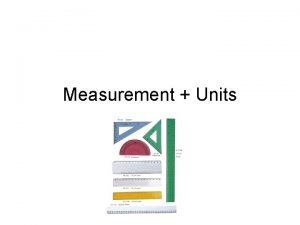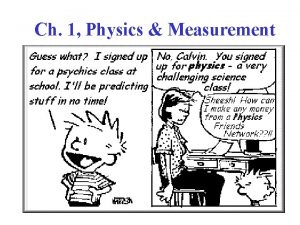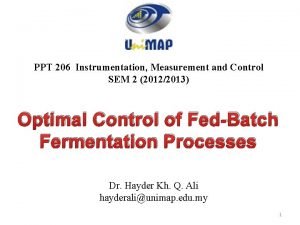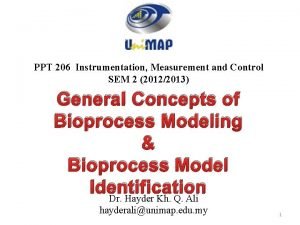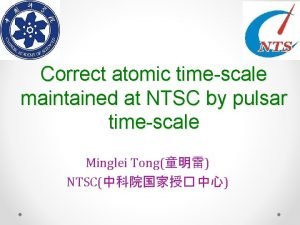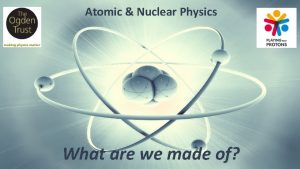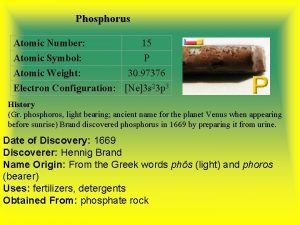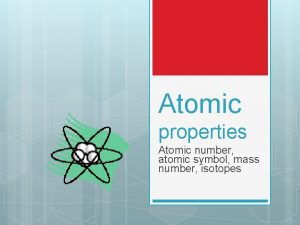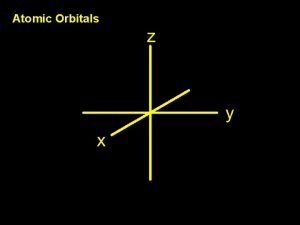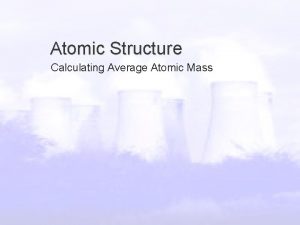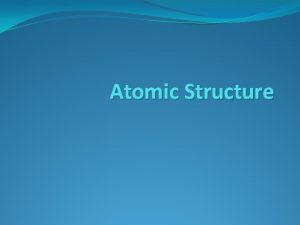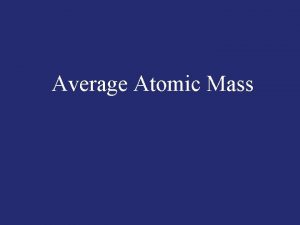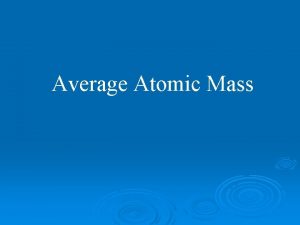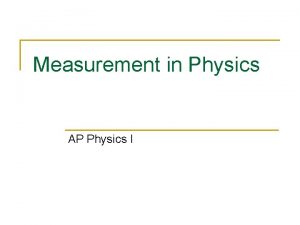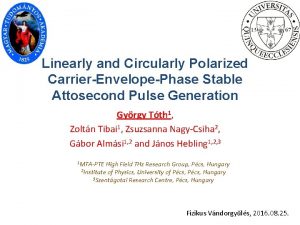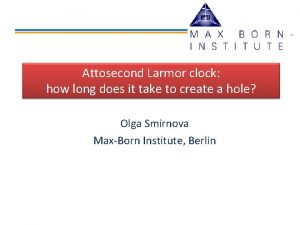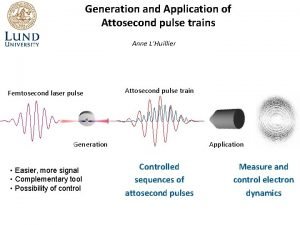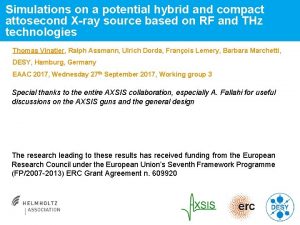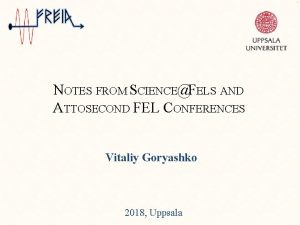Attosecond Physics Control Measurement at the Atomic Timescale





















![Photoelectron kinetic energy [e. V] 90 Directly measured 20 10 80 0 70 -10 Photoelectron kinetic energy [e. V] 90 Directly measured 20 10 80 0 70 -10](https://slidetodoc.com/presentation_image_h/c026d20732f80b69abcd6cd6ec9c52be/image-22.jpg)












![Interfering quantum paths in atomic decay super Coster-Kronig 30 Cross section [Mb] direct 20 Interfering quantum paths in atomic decay super Coster-Kronig 30 Cross section [Mb] direct 20](https://slidetodoc.com/presentation_image_h/c026d20732f80b69abcd6cd6ec9c52be/image-35.jpg)




- Slides: 39

Attosecond Physics: Control & Measurement at the Atomic Timescale Ferenc Krausz krausz@mpq. mpg. de Max-Planck-Institut für Quantenoptik Garching, Germany Institut für Photonik Technische Universität Wien, Austria Dept. f. Physik, Ludwig. Maximilians-Universität München, Germany FRISNO-8, French-Israeli Symposium on Nonlinear & Quantum Optics, Ein Bokek, Israel, February 21 -25, 2005

Femtochemistry Attophysics Controlling tracing the motion of atoms Controlling and & tracing electrons inside atomsin & molecules controlling & tracing chemical reactions Characteristic time scale: vibrational oscillation period ≥ 7 fs (H 2) time in hydrogen: Bohr-orbit 152 attoseconds

Inner-shell electron dynamics in atoms & molecules

Inner-shell electron dynamics in atoms & molecules Observation in real time requires Energetic ( ≥ 100 e. V) and sudden ( << 1 fs) excitation Measuring technique capable of capturing subsequent dynamics with sub-femtosecond or attosecond resolution

Attosecond metrology: requires Femtosecond metrology: utilizescontrolledvariation of the intensity ultrashort laser of a(cycle-averaged) physical quantity within 1 offemtosecond pulses ε(t) E(t) = ε(t)cos(ωLt + φ) T 0 /4 = 625 attoseconds @ L 0. 75 µm

Attosecond metrology: requires controlled variation of a physical quantity within 1 femtosecond E(t) = ε(t)cos(ωLt + φ) Cosine waveform φ=0 Sine waveform φ = /2 T 0 as 2. 5 T 0 /4 625 (@ fs 0 0. 75 µm) Requires measurement & control of φ

Lasers produce pulses with varying φ Intense few-cycle laser pulses with stabilized φ φn+1 = φn + Δφ First measurement of Stabilization of Δφ: Vienna, 1996 Boulder, Munich-Vienna 2000 Vienna-Munich, 2003: Baltuska et al, Nature 421, 611

Few-cycle light with controlled φ: light waveform control k. Hz Pump Laser Ti: sa Oscillator BS 50% Multipass Ti: sa Amplifier p = 5 fs Hollow-Fiber- 0. 4 -m. J Chirped-Mirror 1 -k. Hz 5 -fs BS 0. 7% Pulse Compressor pump laser synchronization CW Pump AOM Laser Phase. Locking Electronics f-to-2 f WLG interferometer I Divider 80000 / Divider /4 × 2 Ip = 0. 1 TW f-to-2 f WLG interferometer II phaselocked pulses Personal Computer × 2 Phase detector CCD Baltuska et al, Nature 421, 611 (2003) P. H. Bucksbaum, Nature 421, 593 (2003)

Exposing atoms to linearly-polarized few-cycle light: giant atomic dipole oscillations 3 D-Solution of the Schrödinger equation for hydrogen: Armin Scrinzi Animation: Barbara Ferus, Matthias Uiberacker

Few-cycle-driven Semiclassicalhigh recollision harmonic model emission EL(t) Trajectory x(t) of the most energetic recolliding wavepacket Emission of highest-energy photon ħωx Ionization threshold Cosine waveform M. Lewenstein et al. , Phys. Rev. A 49, 2117 (1994)

Few-cycle-driven high harmonic emission Sine waveform EL(t) ħωx Ionization threshold

Laser field transfers momentum to electrons knocked free by xuv photons Drescher et al. , Science 291, 1923 (2001) Kienberger et al. , Science 297, 1144 (2002)

Momentum transfer depends on instant of electron release within the wave cycle

Mapping time to momentum Momentum change along the EL vector Laser electric field Δp(t 7) Δp(t 6) Δp(t 5) t 1 t 2 t 3 t 4 t 5 t 6 t 7 instant of electron release Δp(t 4) Δp(t 3) Δp(t 2) Δp(t 1) Incident X-ray intensity -500 as 0 Δpi 500 as Optical-field-driven streak camera J. Itatani et al. , Phys. Rev. Lett. 88, 173903 (2002) M. Kitzler et al. , Phys. Rev. Lett. 88, 173904 (2002)

Electron-optical streak camera Resolution: several 100 fs D. J. Bradley et al. , Opt. Commun. 2, 391 (1971) M. Y. Schelev et al. , Appl. Phys. Lett. 18, 354 (1971)

Optical-field-driven streak camera

Attosecond pump-probe apparatus Time-of-light electron spectrometer XUV pulse knocks electrons free in the presence of the few-cycle laser field atomic gas Few-femtosecond, few-cycle laser pulse λL 750 nm Tp = 5 - 7 fs Wp = 0. 3 - 0. 5 m. J Near-diffraction-limited XUV/Soft-X-ray beam Ne gas M. Drescher et al. , Science 291, 1923 (2001)

Optical-field-driven streak camera ΔW Mo/Si mirror +10 e. V 0. 3 0. 2 0. 1 85 90 95 Photon energy [e. V] 100 0. 0 105 Mo/Si mirror reflectivity 0 -10 e. V d. N/d. W ħωx

Optical-field-driven streak camera records electron emission with sub-fs resolution ΔW 1 fs x < 500 as 1 fs +10 e. V 0 X-ray intensity [a. u. ] 0. 3 1. 0 0. 2 0. 5 0. 1 0. 0 85 90 95 Photon energy [e. V] 100 105 Mo/Si mirror reflectivity -10 e. V d. N/d. W ħωx

Full characterization of a sub-fs, ~100 -e. V xuv pulse EL(t) X = 250 attoseconds Field-free spectrum Reconstructed temporal intensity profile and chirp of the xuv excitation pulse: td = -T 0/4 td = +T 0/4 R. Kienberger et al. , Nature 427, 817 (2004)

Energy shift of sub-fs electron wavepacket ΔW +10 e. V 0 -10 e. V t. D probes the vector potential of the electric field of light ħωx d. N/d. W
![Photoelectron kinetic energy e V 90 Directly measured 20 10 80 0 70 10 Photoelectron kinetic energy [e. V] 90 Directly measured 20 10 80 0 70 -10](https://slidetodoc.com/presentation_image_h/c026d20732f80b69abcd6cd6ec9c52be/image-22.jpg)
Photoelectron kinetic energy [e. V] 90 Directly measured 20 10 80 0 70 -10 -20 Calculated from spectrum 60 Vector potential, A L (t) [fs MV/cm] Light electric field, EL(t) (107 V/cm) Direct measurement of light waves Attosecond light field detector 50 0 2 4 6 8 Time 10 t (fs) 12 Delay Dt [fs] 14 16 18 20 22 E. Goulielmakis et al. , Science 305, 1267 (2004)

Optical-field-driven streak camera can probe both primary (photo) and secondary (Auger) electrons Wkin d. N d. W Streak images 0 W 2 W 1 Δt Photo-emission x - duration of X-ray pulse Wh Wbind Auger-emission h - lifetime of core hole

Simulated streak images of Auger electron emission versus delay between pump XUV pulse ( X = 0. 5 fs) and the probe laser pulse (T 0 = 2. 5 fs, L = 5 fs) h < To/2 0 1 2 h = 0. 2 fs 40 h = 2 fs 40 30 -2 -1 50 b 0 1 2 30 h = 0. 5 fs -4 -2 0 2 4 6 8 10 50 e 40 30 -2 -1 50 c 40 50 d 0 1 2 h = 1 fs 12 14 h = 5 fs 40 30 -4 -2 0 2 4 6 8 10 Delay Dt [fs] 30 Sampling by laser field Resolution 100 as Sampling by pulse envelope Resolution 1 fs 12 14 L Photoelectron kinetic energy [e. V] -2 -1 50 a h > To/2

Snapshots of Electron Emission from Kr Following Core-Hole Excitation by a Sub-fs X-Ray Pulse Tracing core-hole decay directly in time Lifetime of M-shell (3 d) vacancy, h = 7. 9 1 fs M. Drescher et al. , Nature 419, 803 (2002)

Drescher et al. , Nature 419, 803 (2002)

Observing field ionization in real time ? EL(t) Theory : Ground state population First experiment : Bound state population Laser field depletes the Integrated XUV electron yield state of the ground most-weakly bound electron by tunnel ionization Laser field M. Spammer, O. Smirnova, A. Scrinzi, Vienna Attosecond XUV pulse probes remaining ground-state population by single-photon ionization T. Uphues, M. Uiberacker et al. , Garching

Probing collisional excitation & relaxation processes EL(t) Ionization threshold Sub-femtosecond collisional excitation up to ke. V energies Subsequent electronic rearrangement can be probed by a sub-fs X-ray pulse available up to 1 ke. V photon energy J. Seres et al. , Nature 433, 596 (2005)

From femtochemistry towards attophysics Space Femtochemistry: controlling & tracing atomic motion on the length scale of chemical bonds 1Å Molecules Atoms 1 fs Attophysics: controlling & tracing electronic motion on a sub-atomic scale Time

Coworkers A. Apolonski A. Baltuska P. Dombi A. Fernandes E. Goulielmakis N. Ishii R. Kienberger S. Köhler Collaborators Theory: P. B. Corkum, M. Y. Ivanov, NRC Canada T. Brabec, Univ. Ottawa, Canada J. Burgdörfer, Ch. Lemell, A. Scrinzi, O. Smirnova, Vienna Univ. Techn. , A XUV optics U. Kleineberg, U. Heinzmann, Univ. Bielefeld, D XUV spectroscopy: Th. Uphues, M. Drescher, Univ. Hamburg, DESY, D T. Metzger S. Naumov J. Rauschenberger M. Schultze J. Seres C. Teisset M. Uiberacker A. -J. Verhoef V. Yakovlev Light phase control: Ch. Gole, R. Holzwarth, T. Udem, T. W. Hänsch Univ. Munich, MPQ Garching, D & measurement: G. Paulus, M. Schätzel, F. Lindner, H. Walther A&M Univ. Texas, USA, MPQ Garching, D Electron and ion spectroscopy: K. O‘Keeffe, M. Lezius Vienna Univ. Techn. , Austria COLTRIMS: H. Rottke, W. Sandner, MBI Berlin, D

Kiloelectronvolt high harmonic emission from few-cycle-driven helium atoms 100 30 90 80 70 20 60 50 15 40 10 30 20 5 Filter transmission (%) HH Internsity (a. u. ) 25 10 0 0. 5 1 1. 5 2 2. 5 3 3. 5 4 0 Photon Energy (ke. V) Þ Offers the potential for time-resolved spectroscopy with atomic (~ 24 as) resolution

Example: linearly-chirped sub-fs emission ELL(t) e. A Field-free distribution pi Field-free distribution td = -T 0/4 td = +T 0/4 td = -T 0/4

Optical-field-driven streak camera projects ne(p, t) to σe(p) Initial time-momentum distribution of positiveenergy electrons Final momentum distributions “Tomographic images“ of the timemomentum distribution of atomic electron emission Momentum, p Complete reconstruction of atomic excitation and relaxation processes on an attosecond time scale by probing primary (photo) or secondary (Auger) electron emission, respectively. Atomic transient recorder Release time, t R. Kienberger et al. , Nature 427, 817 (2004)

Snapshots of electron emission from Kr following core-hole excitation by a sub-fs xuv pulse Tracing core-hole decay directly in time Lifetime of M-shell (3 d) vacancy, h = 7. 9 1 fs M. Drescher et al. , Nature 419, 803 (2002)
![Interfering quantum paths in atomic decay super CosterKronig 30 Cross section Mb direct 20 Interfering quantum paths in atomic decay super Coster-Kronig 30 Cross section [Mb] direct 20](https://slidetodoc.com/presentation_image_h/c026d20732f80b69abcd6cd6ec9c52be/image-35.jpg)
Interfering quantum paths in atomic decay super Coster-Kronig 30 Cross section [Mb] direct 20 10 0 4 f 5 p Beutler-Fano Line-profile 80 100 120 140 160 Photon energy [e. V] 180 5 s Dy 4 d M. Wickenhauser, J. et Burgdörfer et al. , C. Dzionk al. , PRL. 62, 878 submitted (1989)

Resolving power of the atomic transient recorder - 625 100 0 + 625 80 60 ΔWmax attoseconds 40 Energy [e. V] ~ 100 as @ ~ 100 e. V R. Kienberger et al. , Nature 427, 817 (2004)

Main Idea The core idea is to watch the sub-cycle dynamics of strong field ionization by probing the non-ionized portion of the electronic wave packet with attosecond XUV pulses 2. Laser field depletes ground state 1. Field free situation: electron sits in ground state 3. XUV ionizes remaining ground state population to high continuum states Field Laser Field XUV pulse Time (units of laser cycle) 4. Vary the XUV timing to probe time-dependent depletion

One-electron model Hamiltonian: Strong field Soft-core: = 1. 59 a. u. Models the ionization potential of Xe Ip = 12. 31 e. V Strong laser field: XUV: = 1. 5× 1014 W/cm 2 = 1011 W/cm 2 = 790 nm = 80 e. V = 5 fs = 250 as

Strong Field Ionization – Depletion of Bound States Consider projections on to bound states during the strong field: Fields–free ground state • Ground state population shows dips arising from virtual excitation in the presence of the strong field: • Ionization occurs in steps with large depletion of the bound states population appearing near the peaks of the strong field. Field-free excited states
 Verilog timescale 設定
Verilog timescale 設定 Attosecond
Attosecond Attosecond
Attosecond Attosecond
Attosecond Attosecond
Attosecond Relative atomic mass of beryllium
Relative atomic mass of beryllium Atomic trends
Atomic trends Increasing atomic radius
Increasing atomic radius O
O Whats the difference between atomic mass and atomic number
Whats the difference between atomic mass and atomic number Atomic number vs atomic radius
Atomic number vs atomic radius Opisometer unit
Opisometer unit Vector quantities measure
Vector quantities measure General physics 1 measurements
General physics 1 measurements Physics and measurement chapter 1
Physics and measurement chapter 1 Instrumentation and control systems ppt
Instrumentation and control systems ppt Measurement and control of bioprocess parameters
Measurement and control of bioprocess parameters Why does it happen
Why does it happen University physics with modern physics fifteenth edition
University physics with modern physics fifteenth edition Physics ia research question ideas
Physics ia research question ideas Hình ảnh bộ gõ cơ thể búng tay
Hình ảnh bộ gõ cơ thể búng tay Slidetodoc
Slidetodoc Bổ thể
Bổ thể Tỉ lệ cơ thể trẻ em
Tỉ lệ cơ thể trẻ em Gấu đi như thế nào
Gấu đi như thế nào Glasgow thang điểm
Glasgow thang điểm Chúa sống lại
Chúa sống lại Các môn thể thao bắt đầu bằng tiếng đua
Các môn thể thao bắt đầu bằng tiếng đua Thế nào là hệ số cao nhất
Thế nào là hệ số cao nhất Các châu lục và đại dương trên thế giới
Các châu lục và đại dương trên thế giới Công thức tính độ biến thiên đông lượng
Công thức tính độ biến thiên đông lượng Trời xanh đây là của chúng ta thể thơ
Trời xanh đây là của chúng ta thể thơ Mật thư anh em như thể tay chân
Mật thư anh em như thể tay chân Phép trừ bù
Phép trừ bù Phản ứng thế ankan
Phản ứng thế ankan Các châu lục và đại dương trên thế giới
Các châu lục và đại dương trên thế giới Thơ thất ngôn tứ tuyệt đường luật
Thơ thất ngôn tứ tuyệt đường luật Quá trình desamine hóa có thể tạo ra
Quá trình desamine hóa có thể tạo ra Một số thể thơ truyền thống
Một số thể thơ truyền thống Bàn tay mà dây bẩn
Bàn tay mà dây bẩn
